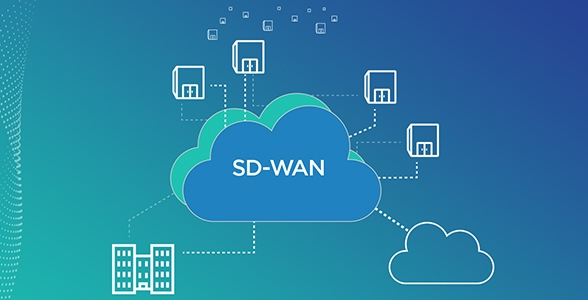Key Takeaways:
- Understanding the fundamentals and benefits of SD-WAN technology.
- Exploring key features that set SD-WAN apart from traditional networking setups.
- Discussing strategic deployment methods for a seamless transition to SD-WAN.
- Highlighting real-world examples of successful SD-WAN implementation.
- Contemplating the future of networking with ongoing advancements in SD-WAN.
Foundation of SD-WAN Technology
At the heart of modern networking advancements lies Software-Defined Wide Area Network (SD-WAN), a game-changing technology that revolutionizes how businesses connect their operations. For those inquiring about what is SD WAN, it is a sophisticated approach to managing network connections that offers unparalleled agility, cost savings, and improved performance over traditional WAN architectures. SD-WAN is a desirable choice for companies of all sizes as it enables speedier response to changing network demands by separating the management layer from the hardware.
Advantages of SD-WAN for Modern Businesses
SD-WAN technology brings a plethora of benefits to the modern enterprise. Costs can be dramatically reduced with the migration from expensive MPLS circuits to affordable broadband connections. Additionally, SD-WAN’s bandwidth management capabilities can improve efficiency, resulting in better usage of available network resources. Enhanced security protocols inherent in SD-WAN architectures provide robust protection by preventing unauthorized access and encrypting data in transit.
Cost Efficiency
Cost efficiency is a significant selling point of SD-WAN. The flexibility in network configuration means businesses can easily select and prioritize internet connections based on cost and performance, often leading to a significant decrease in capital and operational expenses. As opposed to rigid MPLS circuits, SD-WAN permits commercial broadband, which may result in substantial savings without sacrificing the quality of service for critical applications.
Improved Bandwidth Efficiency
SD-WAN’s real-time traffic routing optimizes bandwidth usage by assigning the most appropriate pathways for data packets based on current network performance metrics. This technique enhances the user experience, prevents bottlenecks, and ensures efficient delivery of high-priority traffic across the corporate network, such as VoIP or streaming services.
Enhanced Security
Security is a cornerstone of SD-WAN technology. Features such as end-to-end encryption and secure internet gateways built into the network safeguard sensitive data against potential threats. Moreover, segmenting parts of the network allows administrators to isolate and contain any security incidents, minimizing possible damage and ensuring compliance with data protection regulations.
Core Features That Set SD-WAN Apart
SD-WAN’s unique capabilities distinguish it from legacy network solutions. Critical features such as dynamic path selection ensure optimal data transfer efficiencies, while zero-touch provisioning offers a streamlined, time-saving deployment process. For businesses heavily invested in cloud-based services, SD-WAN’s cloud optimization functionality represents a significant advancement over traditional networking approaches.
Dynamic Path Selection
Dynamic path selection is the cornerstone of SD-WAN technology’s efficiency. SD-WAN solutions can redirect traffic through the most effective route by continually monitoring network conditions, like latency and loss. This capability ensures consistent performance and introduces a level of resilience that traditional WAN solutions struggle to match. Network outages or performance degradation are addressed dynamically, preventing disruption to critical business operations.
Zero-Touch Provisioning
Zero-touch provisioning dramatically simplifies the setup process for new network devices. Devices configured with SD-WAN can be installed with minimal manual configuration, saving time and reducing the potential for human error. This capability allows for the speedy deployment of additional sites without needing professional on-site IT workers, which is especially beneficial for enterprises with many branch locations.
Cloud Optimisation
SD-WAN is designed for the modern, cloud-centric business, offering optimized access to cloud platforms. It accelerates the performance of SaaS applications and simplifies their management, a meaningful advantage in an era where efficient cloud connectivity determines a business’s adaptability and competitiveness.
Strategies for Implementing SD-WAN
While the benefits of SD-WAN are compelling, its implementation needs to be informed and deliberate in order to secure those benefits. A clear strategy should be in place, factoring in assessing the existing network infrastructure, a comprehensive understanding of the business’s specific needs, and a phased approach to deployment. Involvement and training across IT teams are critical, as well as ensuring ongoing support and troubleshooting capabilities post-deployment.
Real-World Success Stories
SD-WAN is not just a theoretical upgrade but a practical solution that has been implemented with great success across a variety of industries. Companies have transformed their network infrastructures with SD-WAN, enabling more robust connectivity options and improved application performance. Retail chains, for example, have used SD-WAN to connect hundreds of outlets, simplifying network management and reducing costs. Healthcare facilities have benefited from SD-WAN by securing patient data and guaranteeing the availability of life-saving applications.
One striking example is the insurance sector, where an organization’s leap to SD-WAN catalyzed enhanced connectivity and robust network management. The decision to transition to SD-WAN not only elevated their operational efficiency but also positioned them well for future technology integrations.
Future of Networking with SD-WAN
The future of enterprise networking will undeniably intertwine further with SD-WAN. As digital transformation initiatives accelerate, the adaptability and scalability offered by SD-WAN become increasingly essential. Businesses can expect ongoing enhancements in SD-WAN technology, such as greater integration with AI and machine learning for more intelligent, autonomous network management. In this evolving landscape, SD-WAN facilitates current operations and is a cornerstone for future innovations.
SD-WAN: Integration with Other Emerging Technologies
Other cutting-edge technical developments, such as artificial intelligence and the Internet of Things (IoT), perfectly fit SD-WAN. When paired with AI, SD-WAN can offer predictive analytics for network health, automated path selection, and self-healing capabilities. As businesses increasingly rely on IoT devices, reliable connectivity becomes crucial. SD-WAN can facilitate secure, efficient communication between these devices, making it an invaluable component in the technology stack of any forward-thinking company.


